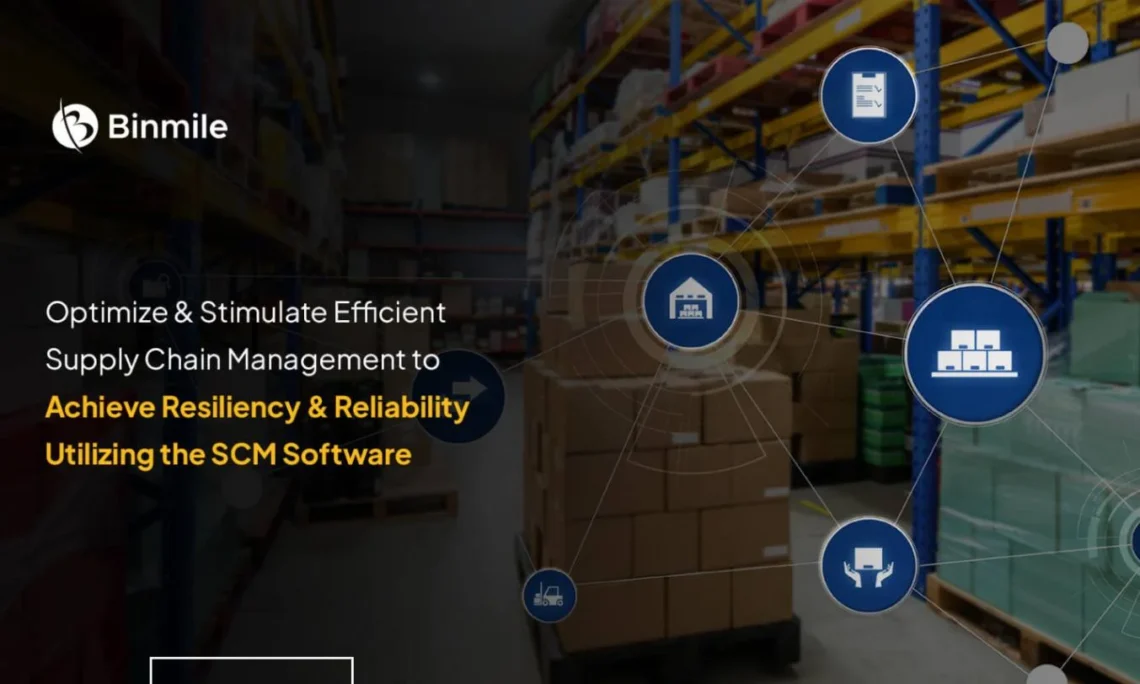In today’s fast-paced business world, managing supply chain risks has become a top priority. With global trade complexities, unpredictable market shifts, and the impact of unforeseen events like natural disasters or pandemics, companies need robust tools to maintain business continuity. This is where supply chain risk management software comes into play.
In this guide, we’ll dive deep into everything you need to know about supply chain risk management software, explore its benefits, and how supply chain management ERP software solutions can optimize business operations.
What is Supply Chain Risk Management Software?
Supply chain risk management software is a specialized tool designed to identify, assess, and mitigate risks throughout the supply chain. It offers companies real-time visibility into potential disruptions, enabling them to make proactive decisions. These solutions are essential for handling risks such as supply shortages, logistics disruptions, and compliance issues.
Why is Supply Chain Risk Management Important?
Supply chain risk management is crucial because even a minor disruption can cause a domino effect, impacting production, delivery, and customer satisfaction. A comprehensive approach helps businesses avoid potential losses, maintain profitability, and enhance resilience against unpredictable scenarios.
Key Features of Supply Chain Risk Management Software
Real-time Monitoring
With real-time monitoring, companies can track every aspect of their supply chain, from procurement to delivery. This feature helps in identifying and addressing risks as they arise.
Risk Assessment & Mitigation
The software evaluates various risk factors, including supplier reliability, geopolitical concerns, and environmental changes. By using these insights, businesses can develop strategies to reduce potential disruptions.
Predictive Analytics
Predictive analytics is a powerful tool that uses historical data to forecast future risks. This helps organizations to prepare and plan for disruptions before they occur.
Supplier Risk Management
Managing supplier risks is a core function of supply chain risk management software. It evaluates supplier performance and reliability, ensuring businesses are partnered with the right vendors.
Types of Supply Chain Risks
Operational Risks
Operational risks include internal process issues, equipment failures, or production downtime that can disrupt the supply chain.
Financial Risks
Financial instability, such as fluctuating exchange rates or credit risks, can have a significant impact on the cost and profitability of supply chains.
Market Risks
Market risks arise from shifts in consumer demand, price volatility, or changes in market regulations that can affect product availability and costs.
Environmental Risks
Natural disasters, climate change, and pandemics are environmental risks that can cause significant disruptions in the supply chain.
Top Supply Chain Risk Management Software Solutions
Example #1: SAP Supply Chain Management
SAP’s solution offers comprehensive risk management capabilities, including real-time monitoring, supplier collaboration, and advanced analytics.
Example #2: Oracle SCM Cloud
Oracle SCM Cloud provides a unified platform for risk management, integrating supply chain planning, logistics, and order management.
Example #3: Riskmethods
Riskmethods focuses on identifying, assessing, and mitigating risks across the supply chain, leveraging AI-powered analytics for better decision-making.
Example #4: Resilinc
Resilinc offers supply chain mapping, risk monitoring, and advanced analytics, making it a leading choice for managing global supply chain risks.
How Supply Chain Management ERP Software Integrates with Risk Management
supply chain management erp software solutions, such as SAP and Oracle, integrate risk management functionalities to provide a holistic view of operations. These systems streamline processes, enabling better risk assessment, supplier management, and strategic planning.
The Benefits of Using Supply Chain Risk Management Software
Enhanced Visibility
Visibility into every stage of the supply chain allows companies to identify potential issues and take corrective actions promptly.
Improved Decision-Making
With comprehensive data and analytics, businesses can make informed decisions to avoid disruptions and minimize losses.
Cost Reduction
Effective risk management reduces the costs associated with delays, inefficiencies, and supply shortages.
Increased Resilience
Companies equipped with the right tools are more resilient to unexpected events, ensuring business continuity.
Choosing the Right Supply Chain Risk Management Software
Scalability
Ensure the software can scale with your business needs as your supply chain grows.
Customization
Look for solutions that offer customizable features to align with your specific risk management needs.
User Interface
A user-friendly interface enhances usability and ensures your team can leverage the software effectively.
Customer Support
Reliable customer support is essential for resolving issues and maximizing the software’s benefits.
The Role of Technology in Modern Supply Chain Risk Management
AI and Machine Learning
AI helps in identifying patterns and anomalies in supply chains, providing predictive insights for better risk management.
Blockchain
Blockchain technology offers transparency and traceability, ensuring data integrity throughout the supply chain.
Internet of Things (IoT)
IoT devices provide real-time data on asset conditions, locations, and environmental factors, enabling better risk monitoring.
Implementation Challenges and Solutions
Implementing supply chain risk management software can be challenging due to resistance to change, high costs, and integration complexities. Solutions include proper change management, phased implementation, and selecting a flexible software provider.
The Future of Supply Chain Risk Management Software
The future of supply chain risk management software will be defined by advanced technologies like AI, blockchain, and IoT, enabling more intelligent, proactive risk management.
FAQs about Supply Chain Risk Management Software
1. What is supply chain risk management software?
Supply chain risk management software helps companies identify, assess, and mitigate risks within their supply chain operations.
2. How does supply chain management ERP software support risk management?
ERP software integrates risk management with supply chain planning, providing a unified view for better decision-making.
3. What are the benefits of using risk management software?
Benefits include enhanced visibility, improved decision-making, cost savings, and increased resilience against disruptions.
4. Which industries benefit the most from supply chain risk management software?
Manufacturing, retail, healthcare, and logistics industries see the most benefits from these solutions.
5. How to choose the right supply chain risk management software?
Consider factors like scalability, customization, user interface, and customer support when selecting a solution.





